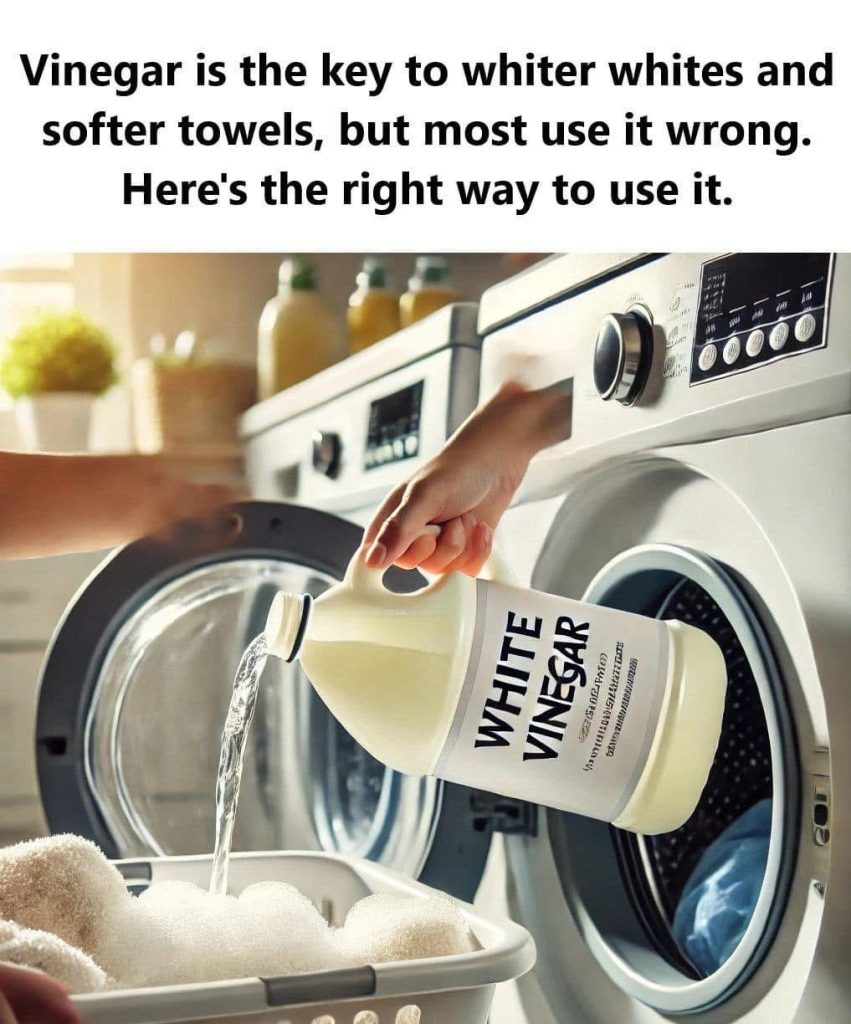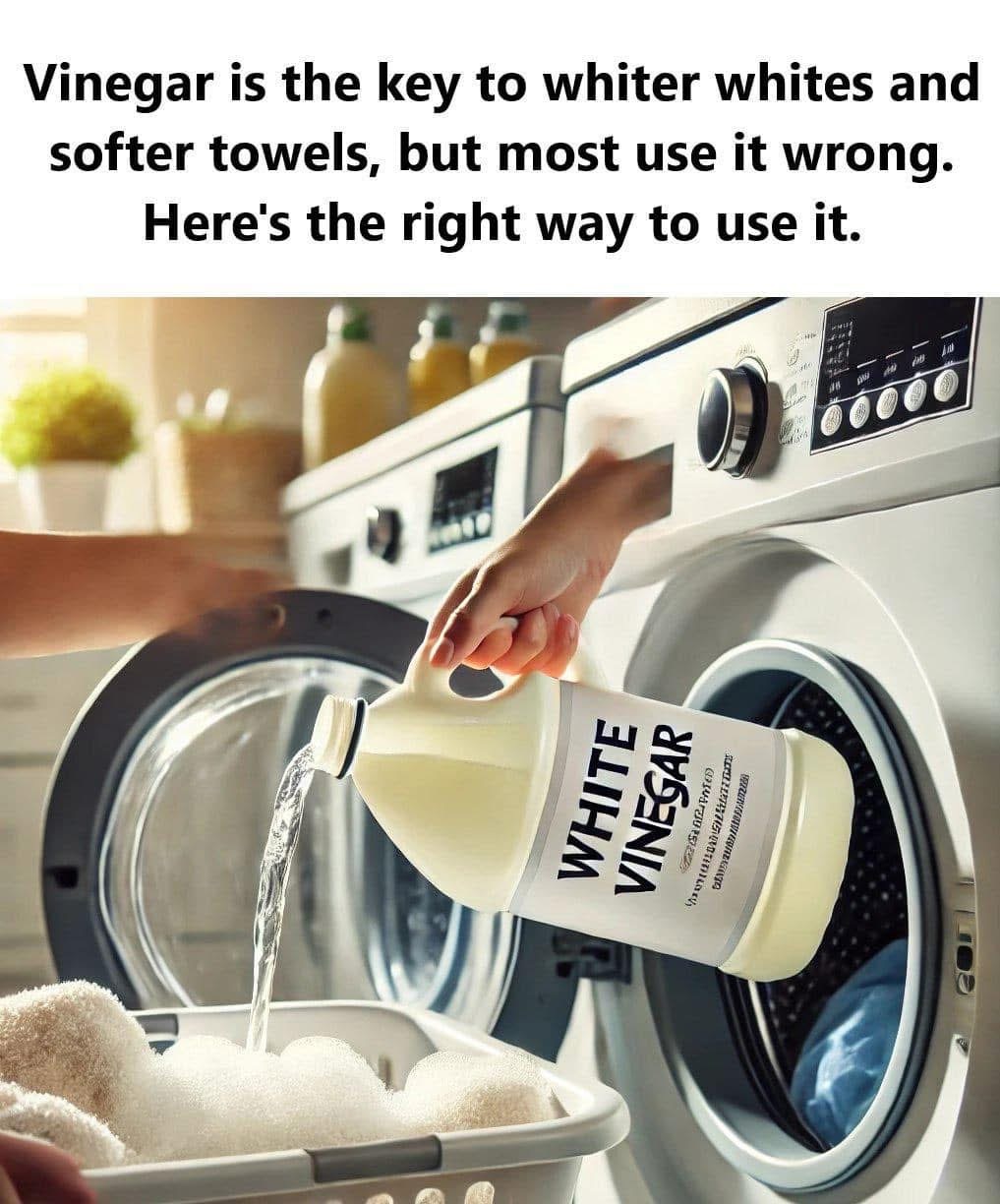
The Ultimate Guide to Using Vinegar in Your Laundry: Whiter Whites, Softer Towels, and a Fresher Wash
Introduction: The Power of Vinegar
White vinegar is a humble, affordable, all-natural product hiding in your kitchen—but it’s also a laundry powerhouse. Most people are unaware of its full potential and may even be using it incorrectly. When used the right way, vinegar can revolutionize how your laundry looks, smells, and feels.
This guide will walk you through the correct ways to use vinegar, what mistakes to avoid, and the science behind why it works.
Benefits of Vinegar in Laundry
Before diving into the how-to, let’s explore why white distilled vinegar is so effective in laundry:
1.
Whitens Whites Naturally
- Vinegar breaks down yellowing residues and dinginess in white fabrics.
- It neutralizes alkaline detergent buildup, which often causes dullness.
2.
Softens Towels and Fabrics
- Fabric softeners can coat towel fibers, making them feel less absorbent.
- Vinegar restores natural fluffiness without synthetic residues.
3.
Neutralizes Odors
- Vinegar neutralizes sweat, mildew, and musty smells instead of masking them.
4.
Cleans Your Washing Machine
- Regular use helps remove soap scum, limescale, and bacteria from your machine.
5.
Reduces Static Cling
- Especially helpful in dry climates or for synthetic fabrics.
How Most People Use It Wrong
Many people pour vinegar directly into the wash drum or with the detergent. This can:
- Dilute the vinegar’s effectiveness
- Neutralize detergent, reducing cleaning power
- Fail to activate its softening and deodorizing properties
The key is to add vinegar at the right stage and in the correct compartment.
The Right Way to Use Vinegar in Laundry
Here’s a step-by-step breakdown for different laundry goals:
1. For Whiter Whites
When to Use: During the rinse cycle
How to Use:
- Add 1 cup (240 ml) of distilled white vinegar to the fabric softener compartment of your washing machine.
- This ensures the vinegar is released during the rinse cycle, avoiding contact with detergent.
Best For:
- White sheets
- Socks
- Towels
- Undergarments
2. For Softer Towels
Why it Works:
- Detergent residue makes towels stiff. Vinegar dissolves this buildup.
How to Use:
- Wash towels as usual with detergent.
- Add 1 cup of white vinegar to the fabric softener tray, not directly in the drum.
Pro Tip:
- Do this once every 3–4 washes for noticeably fluffier towels.
3. For Odor Removal
How to Use:
- For extra stinky clothes (gym wear, musty towels), add ½ to 1 cup of vinegar to the fabric softener compartment.
- If smell is severe, soak clothes in a mixture of 1 part vinegar to 4 parts water for 30 minutes before washing.
4. As a Fabric Softener Alternative
How to Use:
- Replace your liquid softener with ½ to 1 cup of vinegar.
- Add it to the softener compartment—never mix directly with detergent.
Bonus: Vinegar won’t leave residues or artificial scents like commercial softeners.
5. For Washing Machine Maintenance
Monthly Maintenance Wash:
- Run an empty hot wash cycle.
- Add 2 cups of vinegar directly into the drum.
- Let the cycle run fully to clean the tub and remove buildup.
What Type of Vinegar Should You Use?
Always use distilled white vinegar, not apple cider or malt vinegar.
Why?
- Distilled vinegar is clear and doesn’t stain.
- It’s more acidic and effective at cleaning.
- Apple cider vinegar may leave brownish tints on fabric.
Safety Tips and Warnings
- Don’t mix vinegar with bleach. This produces toxic chlorine gas.
- Avoid using vinegar on delicate fabrics like silk, rayon, or acetate.
- For HE (high-efficiency) washers, reduce vinegar usage to ½ cup to avoid oversudsing.
Bonus Uses of Vinegar in Laundry
| Problem | Solution |
| Yellow underarm stains | Soak in vinegar + water before washing |
| Limescale in washing machine | Monthly vinegar rinse |
| Musty smell in towels | Wash with vinegar, no detergent |
| Fabric softener buildup | Run vinegar-only rinse cycle |
| Pet hair removal | Vinegar in rinse cycle reduces static cling |
Final Thoughts: Nature’s Laundry Secret Weapon
In a world filled with synthetic detergents and chemical-laden softeners, white vinegar offers a natural, affordable, and effective alternative. By understanding how and when to use it properly, you can achieve cleaner, softer, and fresher-smelling laundry—all while protecting your fabrics and your machine.
Whether you’re looking to restore your dingy whites, revive your crunchy towels, or eliminate stubborn odors, vinegar may be the laundry solution you’ve been missing.
